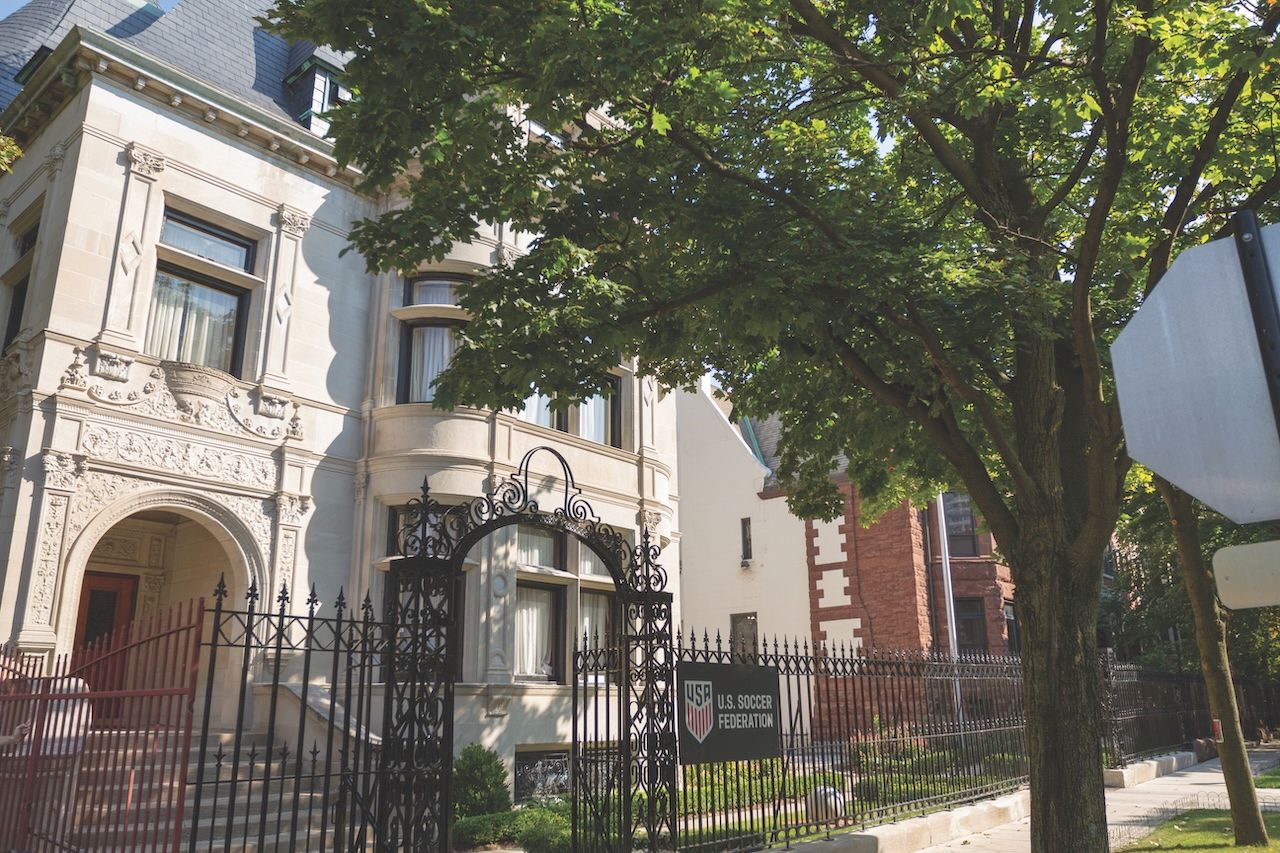CHICAGO: Home of U.S. Soccer (1991-2025)
CHICAGO: Home of U.S. Soccer (1991-2025)

In October 2022, U.S. Soccer moved to 303 E. Wacker in the heart of downtown Chicago. The high-rise building served as the Federation’s headquarters for three years ahead of the organization’s official move to Fayetteville, Ga. in anticipation of the opening of the Arthur M. Blank U.S. Soccer National Training Center.
Prior to its base in downtown Chicago, and in the tradition of many world soccer federations and the FIFA House in Zurich, the U.S. Soccer Federation took up residence in two refurbished mansions in Chicago’s Prairie Avenue Historical District in 1991. Since dubbed the U.S. Soccer House, the corner of 18th Street and Prairie Avenue served as the American home of the world’s most popular sport for 31 years.
Formerly located in Colorado Springs, Colo., U.S. Soccer moved its operational base into the Kimball house at 1801 South Prairie Avenue and the Coleman-Ames house at 1811 South Prairie Avenue in December of 1991.
Dating back to 1873, the Soccer House was built by William Wallace Kimball, founder of Kimball pianos and organs; Joseph Coleman, president of a hardware manufacturing firm; and Coleman’s wife, Leonora, who served on the board of the Women’s Christian Association in 1886.
There was a time when Prairie Avenue, from 16th to 22nd streets, was the “Fifth Avenue” of the Midwest. The area is a testament to the hard work and dedication of the men and women who helped shape the industrialization of the Midwest, and in 1979 it was designated an historical district.
Nearly 20 millionaires once resided within Soccer House’s six-block area. Families who were influential in the industrialization of the Midwest and called South Prairie Avenue home included: George Pullman (railroad cars), John J. Glessner (farming implements), Marshall Field (retailer), Samuel Allerton (banker) and Philip Armour (meat packing).
Construction of Prairie Avenue began after the Great Chicago Fire of 1871 when Pullman became the first millionaire to move to the area, building the grandest of Prairie Avenue mansions in 1873. Friends of Pullman followed his lead and also built extravagant homes on Prairie Avenue. The Marshall Field House was the first in the neighborhood to be electrically lit.
The Kimball House, built of Bedford limestone and topped with a slate roof, has an exterior consisting of numerous large and small turrets, gables, balconies and ornamental iron-railed galleries. The interior of Kimball House is as extravagant as its exterior, with wood abundant throughout. The ceilings are beamed in oak and mahogany, and fireplaces made of onyx warm the parlor.
Neighboring the Kimball House to the south is the Coleman-Ames House built in 1886. Numerous families have resided in this mansion. Coleman, the original owner, lived in the home until 1888, when he sold the mansion to Massachusetts coal merchant Miner T. Ames. Ames resided in the house for just two years before he died in 1890. The Coleman-Ames house is home to U.S. Soccer’s coaching and refereeing departments.
It wasn’t until the late 1940s that a connecting link between the Kimball and Coleman coach houses was erected, designed to give the courtyard a unified appearance.
With its historic appearance, Soccer House was often Chicago’s home to Hollywood, serving as a location shoot for a number of motion pictures, including extended use for the filming of Richard Gere’s “Primal Fear” and in more recent years Showtime’s “Shameless.”





